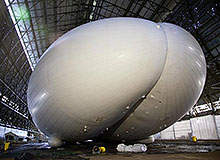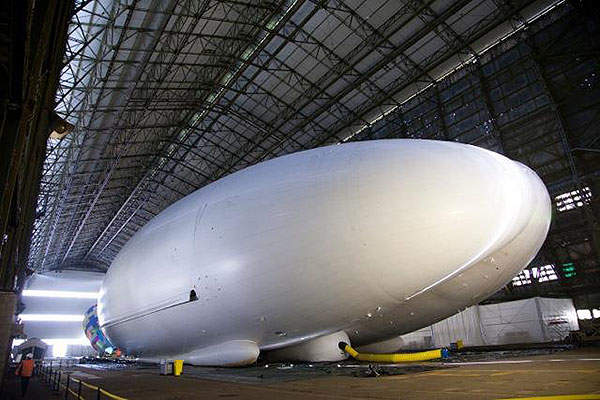Airlander 10 (previously HAV304 Airlander) is a long-endurance, multi-intelligence vehicle (LEMV) and the world’s biggest lighter-than-air craft designed and developed by UK-based Hybrid Air Vehicles (HAV). Its flight test programme was expected to conclude in 2016.
The hybrid aircraft is intended for surveillance, academic research, communications, and filming and geological survey missions. It can stay airborne at an altitude of 20,000ft for three weeks. The global market demand for the Airlander 10 is expected to be 600 to 1,000 aircraft.
The Airlander 10 was displayed at a hangar in Bedfordshire in March 2016, and the naming ceremony of the airship was held in April 2016.
HAV is also developing a heavy-lift version known as Airlander 50, which can transport approximately 50t of freight. The Airlander 50 will have a length of 390ft and envelope volume of 3.64 million cubic feet.
Development history of Airlander
Development of the Airlander 10 originally began in June 2010 in collaboration with Northrop Grumman for the US Army.
The first flight test of the aircraft was successfully completed in August 2012 at Lakehurst, New Jersey, US.
The development was subsequently abandoned by the US Army due to budget issues after spending around $300m, with the aircraft then sold to HAV at a nominal price. The company relaunched the Airlander in February 2014 and received a £2.5m ($4.16m) grant from the UK Government.
The HAV Airlander 10 prototype made its first flight on 17 August 2016. The aircraft sustained damage to its flight deck after a heavy landing during the second test flight on 24 August 2016.
Airlander 10 design and features
The Airlander 10 partly features design characteristics of fixed-wing aircraft, airships and helicopters. The hull features an egg-shaped cross-section united to a cambered longitudinal shape. Its aerodynamic shape contributes to around 40% of the vehicle’s lift, while helium buoyancy ensures the aircraft remains airborne for extremely long periods.
The hull strake of the airship is fitted with two tailfins, reducing the drag. A bow thruster is also provided for lateral thrust and manoeuvrability during the flight.
Located on the centreline, the payload module comprises a flight deck, universal load beam and fuel tanks. The payload compartment has a capacity of 22,050lb (10,000kg). In addition, the aircraft is integrated with a mooring mast attachment.
The aircraft has a length of 91m (300ft), width of 34m (113ft), height of 26m (85ft) and total volume of 1.34 million cubic feet (38,000m³). It is capable of accommodating between seven and eight tonnes of on-board surveillance equipment and is designed to be 70% more eco-friendly than existing cargo planes.
Airlander 10 flight deck
The flight deck of the Airlander 10 features one pilot station and is equipped with a single pilot control system. The flight deck features large transparent surfaces for all-around visibility. It also includes a payload compartment and sophisticated flight control systems. Options are available for manned, remotely piloted and autonomous flight control.
Airlander 10 landing system
The airship features an air cushion landing system and is capable of taking off from land, water, desert, ice, sand and fields using pneumatic tubes fitted below the two outer hulls. The tubes can be pulled in during the flight.
Airlander engine and performance
The Airlander 10 is powered by four 4Lt V8 direct-injection diesel engines, generating around 350hp each. The power plant also features a supercharged induction system.
Two engines are positioned forward on the hull while two are mounted on the stern of the hull for cruise operation.
The cruise speed of the airship is 148km/h (80KTAS) and loitering speed is 37km/h (20KTAS). The aircraft has an empty weight of 44,100lb (20,000kg) and can carry a payload of 22,050lb (10,000kg). It has an endurance of around 21 days at an altitude of 20,000ft (6,100m) above sea level.





